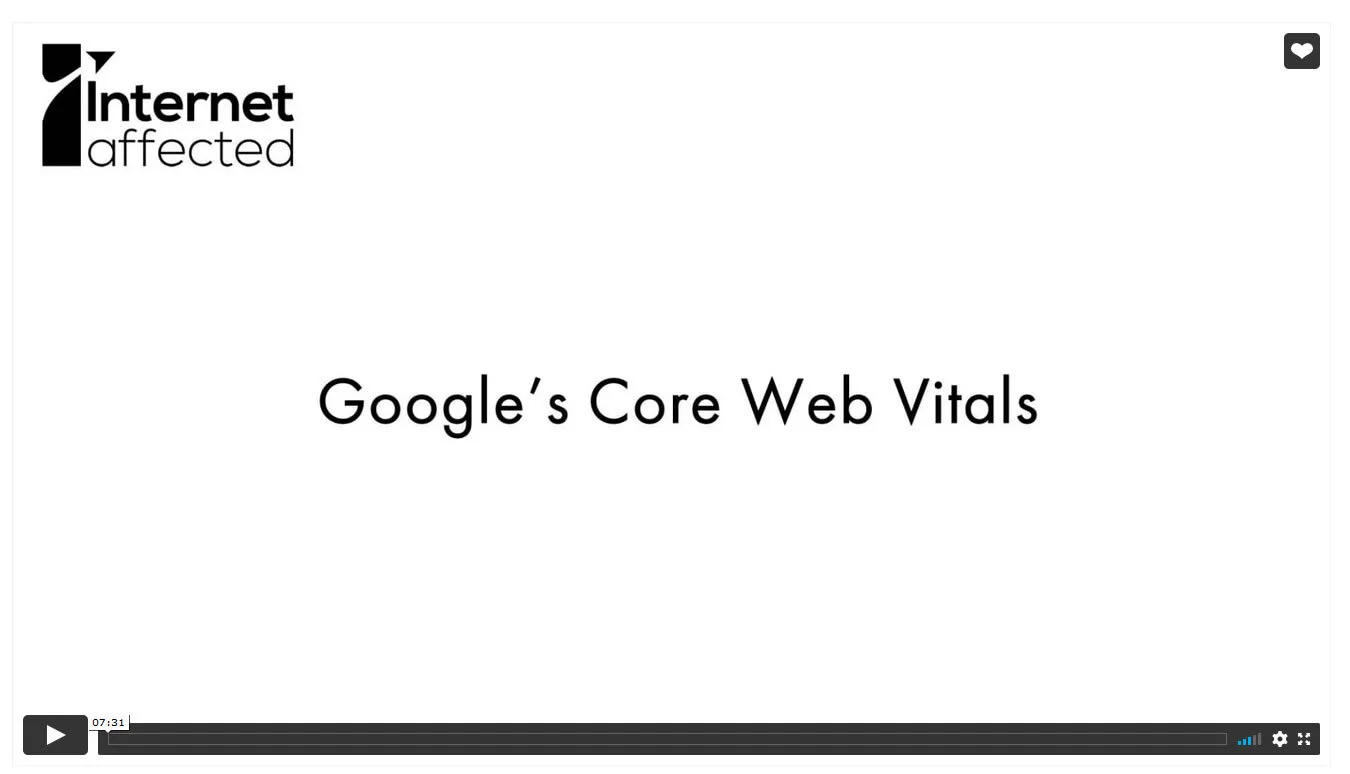Google Core Web Vitals - What hotels need to do to keep a hold of free traffic
Google’s core web vitals are combined metrics used to measure a website across a series of key performance indicators. In May, 2021 these Core Web Vitals will become a ranking signal. That means that if your website falls foul of the metrics, you might see a traffic loss for your hotel.
If you are a hotel marketing club member, you can find the video-cast of this post, that features a walk-though of finding and interpreting the Google Web Vitals in Google Search Console, in your members area, plus the take-aways and action points – If you are not yet a member, you can signup here.
In the following graphic you can see how each of the three values are represented and the minimum thresholds for each.
For members of our Hotel Marketing Club, please click the image above to access the video explanation.
In the following graphic you can see how each of the three values are represented and the minimum thresholds
Google’s Core Web Vital metrics identified in 2020 and currently in use [source]
Google’s core web vitals use three metrics:
How long it takes for the main part of a webpage to load (LCP);
How long it takes the web-page to become interactive (FID), and finally;
How much the webpage layout moves around when loading (CLS)
Notice we said web-page and not website. That’s right these measurements are applied at a page and not domain level. You might have pages that pass, and pages that fail.
For each web-vital metric Google selects from “Poor” through to “Needs Improvement” and finally “Good” values.
If we were in school, we might expect that “Poor” is going to be considered a fail, while “needs improvement” might be the suggestion that as long as you keep trying and making improvements, your page will be fine. Obviously, everyone wants a nice green tick for good!
These KPI standards will not remain caste in stone, in the blogpost Google hints at this by stating the the 3 Core Web Vitals are those “set for 2020”.
It means that looking to the future, hotels – as will other businesses - are going to need to invest in website performance to keep favour in the Google Search index, expect more changes so that Google’s users can get a satisfactory experience.
We’ll now take a look at where you can access these reports for your own hotel, and how to interpret the results and take action [our live video session in Google Search Console begins here]
After logging in to Google Search Console find your hotel property and then go to Core vitals from the sidebar menu. If your hotel doesn’t have access to Google Search Console account, just ask your web-agency for read-access, as this protects their work from an accidental and damaging button click.
In our live example you can see that the report is split between Mobile and Desktop CORE WEB VITALS, and that captures the Google Universe experience and allows you to see on which devices Google considers that your hotel has a problem.
You should be able to find data in your Google Search Console account under Core Web Vitals, but if not you should see link to the Page Speed Insights test where you can do a manual test for your hotel website
In our live case we can see that while there were some URLS that needed improving on mobile, after changes were made Google considered the website on mobile to be healthy.
By contrast when we looked at Desktop, we saw that some URLs could do with some improvement and so we explored the changes Google wanted us to make for their ideal world.
In our live example we were able to see that when we clicked on open report that up until the 16th March Google had some issues with the web-pages, but that once these changes were made they went from the “Poor” rating, in this case for CLS (layout shift), CLS, to “needing improvement”.
We then clicked on CLS issue to be shown the URLS that have been affected.
In the subsequent screen we saw the specific URLS that needed to have changes made and also how to request that Google revisits the page, after a fix of the URL had been made.
If the problem has been fixed the next time Google visits, you would also receive a notification in your hotel’s Google Search Console Account.
Depending on the type of problem that has been identified, it might be necessary to contact your web-agency, or SEO agency for advice on how to fix the problem.
Considerations for Hotels
CORE WEB VITALS are very hard metrics to get really good scores for. That is because they are forcing a requirement that is quite new on web-designers and historic web-design trends.
If this negative ranking signal was implemented as stated we would expect many 100s of thousands of websites to be affected by these changes.
CORE WEB VITALS is quite an exclusive club in as much as the requirements being placed on hotels and other businesses that want to get preferential listings in Google are quite onerous: Consider the need of having a Content Delivery Networks, advanced code optimisations and other conditional loading options for mobile and desktop as minimum standards, and it starts to look quite expensive.
Take Aways
Core Web Vitals are becoming key performance metrics to ensure that your hotel has the widest breadth of exposure across the Google network, check with your local web-agency to ensure that your hotel is ticking all the boxes that Google is now stipulating for exposure in their network.
If you are a member of our Hotel Marketers Club you can access our full list of recommendations and watch the video screen-cast of this blog post.
About the Author
Glyn Spencer Hopkins is the owner of Internet Affected and has been working exclusively with hotels for over a decade.
Internet Affected provides web marketing services tailored to the individual personalities of hotels; a complete range of digital services designed to help them take back ownership of their hotel brand from the OTAs. Specialized marketing solutions to increase guest loyalty, food & beverage bookings, events and wedding inquiries, clearly reported in straightforward language.


![Google’s Core Web Vital metrics identified in 2020 and currently in use [source]](https://images.squarespace-cdn.com/content/v1/5dc98e229b46420a082c8410/1617091006262-GJ8JN1IFR7KDUFIWWN5T/Google+Core+Web+Vitals)

